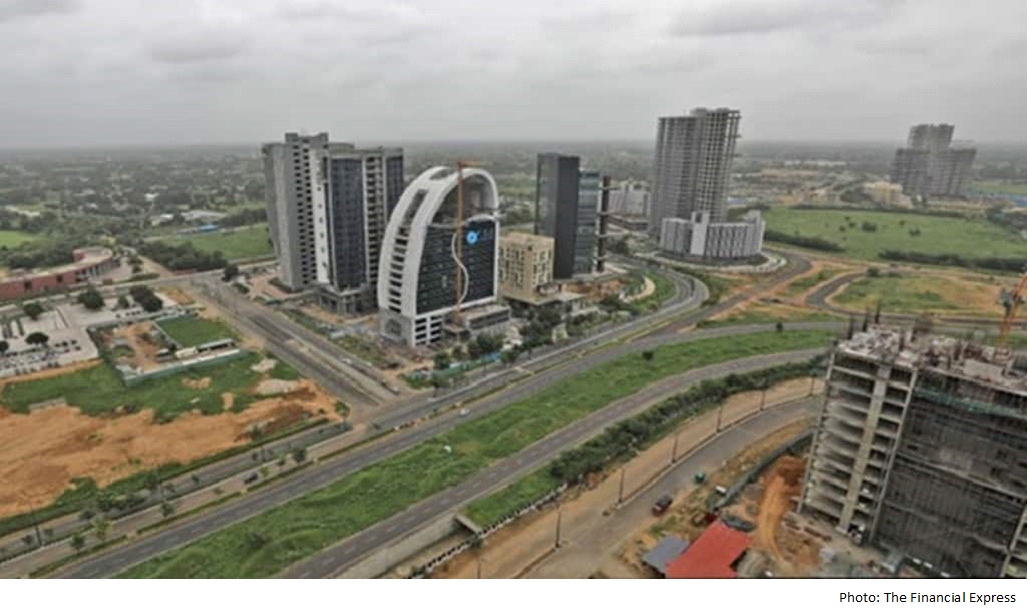The right track to growth: Infrastructure is key driving force for realising India’s vision of $40 trillion economy by 2047
31 Jan 2024
Opinion: Saurabh Bandyopadhyay.
Infrastructure is the key driving force for realising India’s vision of a $40 trillion economy by 2047.
Infrastructure is the key driving force for realising India’s vision of a $40 trillion economy by 2047. The Railways has been one of the most crucial partners in infrastructure development, gearing up for a high-speed network both for the passenger segment as well as for freight movement.
Consequent to the growing GDP, the Indian Railways (IR) network will have to handle a large increase in freight traffic in the short and longer-term. IR’s dedicated freight corridors (DFCs) along with feeder routes are aimed at ensuring the availability of sufficient capacity in the face of rising demand for transport. The two DFCs—Eastern (EDFC) and Western (WDFC) —have 3,381 km of track commissioned with an approved expenditure of Rs 81,459 crore that connect manufacturing hubs like Ludhiana and Mumbai with important ports, allowing exclusive freight movement, decongestion, and improved on-time performance.
These corridors are level-headedly planned to lighten the burden on existing railway trunk routes of Delhi-Howrah, Howrah-Mumbai, and Mumbai-Delhi, which have a line capacity utilisation varying between 115% to 150%. These corridors are paving the way for a high-capacity rail network, capable of handling faster (about 45 kmph faster than IR), heavier (about 6,600 tonnes higher capacity per train than IR, more than double), longer (about 700-800m longer train length as compared to IR, almost double), and higher-volume (about 2.6 times higher than IR on an average) freight trains.
The Railways has historically had mixed corridors where both mail/express/passenger (MEP) trains share the track with the freight trains. Although more revenue is obtained from freight traffic, the MEP trains usually take precedence over the freight trains. As a result, the average speed of freight trains turns fairly low and over the years, freight share too has dwindled, from 88% in 1950-51 to just 26% in 2021-22.
As part of the National Rail Plan (NRP), IR is aiming at increasing the modal share of freight to 45% by 2030. This is attainable given the elasticity of the rail transport demand with GDP growth rates being in the vicinity of 1.1-1.2% . Notably, the focus is on the congested Golden Quadrilateral, where the current rail infrastructure is overburdened. In this context, Dedicated Freight Corridor Corporation of India Limited (DFCCIL) has assumed a crucial role of operating and maintaining freight corridors to ensure a smooth and uninterrupted movement of goods across the routes.
The cohesive approach of DFCCIL pledges optimal utilisation of resources by delivering operational efficiencies and economies of scale, endeavouring to benefit both the industry and consumers. Since freight lines are dedicated, DFCCIL plans an average speed of over 70 kmph, which is almost three times higher than the average speed of 25 kmph of the conventional lines.
Moreover, to augment the capacity of the container traffic, two containers are stacked on another in WDFC with surety of arrival of goods by trains for the transporters. In addition, the DFC corridors are supported by Multimodal Logistics Parks, with seamless connectivity between rail and road modes, thereby making first- and last-mile connectivity faster and integrated. Due to these factors, the DFC corridors have the capacity to substitute freight traffic from the road significantly.
DFCCIL has commissioned more than 2,000 km (73%) of the total network and the remaining sections will be commissioned by March 2024. There were certain direct benefits envisaged by DFCCIL, such as decongesting the Golden Quadrilateral and enabling higher share of railways in freight transportation. Key factors for facilitating freight transportation and reduced logistic cost of DFCs are displayed in the accompanying graphic.
Determining how a DFC compares with the Golden Quadrilateral and other modes on these parameters are important to ascertain its competitiveness in freight transportation along the Eastern and Western corridors. There are several indirect and induced benefits that arise from DFCs at the national level, reflecting ‘spillovers’ beyond the envisaged direct benefits through the multiplier effect.
An estimation of their indirect contribution is not only important for national and international perception and policy implications, but also to generate considerable investment interest for the pending North-South and Southern DFCs.
The author is Senior fellow at NCAER, views are personal.
Published in: The Financial Express, 31 Jan 2024






